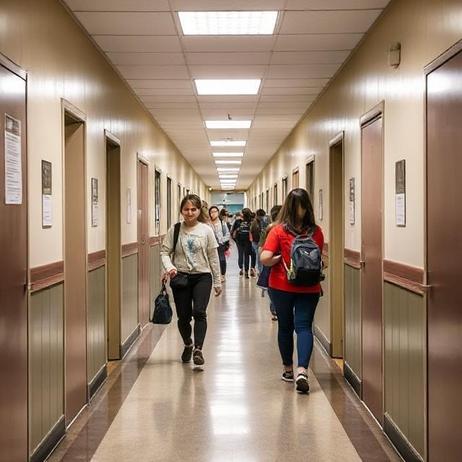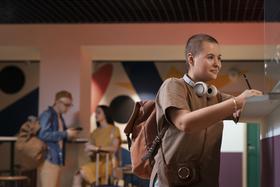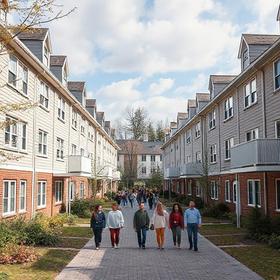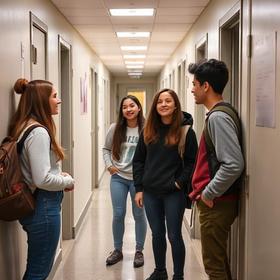Introduction
As we move through 2025, boarding schools are evolving at a pace that merits careful attention from parents, students and educators. The world of boarding education is no longer static: new models, priorities and pressures are reshaping what it means to send a child to a boarding school. In this article we examine key trends shaping the future of boarding schools and highlight what parents should watch as they evaluate residential school options for their children.
1. Well-being and Residential Life: A New Priority
One of the most significant shifts in the boarding-school world is an elevated focus on student well-being, mental health and the quality of residential life.
Many boarding schools are embedding formal wellness programming, counselling services, mindfulness practices and more robust support structures for boarding students. Boarding School Review
Schools are rethinking residential life design: dormitories, communal spaces and “house systems” now often include dedicated wellness suites, peer-support staff, and curricula addressing adjustment, homesickness and resilience.
Digital and screen-time management are also evolving: some schools are limiting smartphone use in dorms or providing structured times for digital-free communal life, as part of promoting authentic social interaction.
What parents should ask:
What residential-life support does the school offer (counselling, peer mentoring, health services)?
How does the institution monitor and support student adaptation to communal living, particularly for younger or international boarders?
What are the screen-time / digital-use policies in dorms, and how are students prepared for balancing academic and social life?
2. Flexible Boarding Models and Globalisation
The traditional model of full-time boarding (seven days a week, academic year) is increasingly supplemented by flexible options and global student populations.
Flexible boarding models
Many schools now offer weekly boarding (students stay during the week and return home on weekends), five-day boarding (Sunday/Tuesday to Thursday/Friday) or short-term boarding arrangements, allowing families greater flexibility.
This flexibility appeals to families whose children commute from home regionally, who travel frequently, or who desire a boarding experience without full separation.
Globalisation and international enrolment
According to a survey of boarding‐school admissions officers, approximately 45 % of boarding schools reported year-over-year increases in international student enrolment for 2024-25. Aisap
Boarding schools are partnering with overseas markets, recruiting from new geographies, and adapting programmes to support multicultural student bodies and global experience.
Some boarding schools are opening international or satellite campuses (or exploring partnerships abroad) to capture that global demand.
What parents should watch:
If considering an international student: how well the school supports cultural transition, English-language learners, and homesickness from afar.
Which boarding model best fits your family’s rhythm and travel patterns: full year vs weekly vs partial.
How global the student body is: does the school have diversity of nationalities, and do students benefit from peer learning across cultures?
3. Academic Innovation, Technology and Skills for Tomorrow
Boarding schools are uniquely positioned to offer immersive academic and co-curricular experiences—24/7 access to resources, residential labs, evening study, faculty oversight. In 2025 and beyond, schools are updating their academic mission accordingly.
Schools are integrating project-based learning, interdisciplinary curricula, AI-ethics modules, digital-collaboration labs and global research programmes.
Hybrid learning is becoming more normal: though boarding inherently emphasizes in-person living and learning, there is increased blending of virtual collaboration (especially for global partner schools) and flexible course delivery. Crain's Chicago Business
The demand for “future-ready” skills—critical thinking, global citizenship, digital literacy, multilingual competency—is driving boarding schools to rethink not only what students learn, but how they live and learn in residential settings.
Key questions for parents:
What special academic programmes does the boarding school offer (IB, AP, research tracks, global exchange)?
How does the residential environment support study: evening tutorials, supervised dorm study halls, access to labs/resources after hours?
How does the school prepare students for the world beyond – in terms of digital literacy, global awareness and leadership?
4. Access, Affordability and Equity
Boarding schools have long carried the perception of exclusivity and high cost. In 2025, this conversation is shifting: schools are seeking to broaden access, adjust pricing models, and diversify student bodies.
Some schools are experimenting with sliding-scale tuition, income-based scholarships and endowment-funded aid specifically to reach middle-income families. Cerini & Associates, LLP
There is growing awareness that boarding schools must reflect a wider socioeconomic spectrum of students—in part to strengthen the residential community and in part to sustain enrollment growth in competitive environments.
However, cost remains a real barrier: full boarding tuition (especially in elite schools) continues to be significant, and families must carefully consider total cost, travel, boarding-house fees and extra-curricular expenses.
Checklist for parents:
What percentage of boarding students receive financial aid, and what is the average aid amount (and average net cost)?
Are there flexible boarding-models or part-boarding options (e.g., weekly boarding) to reduce cost or ease transition?
Does the school emphasize outreach to first-generation boarders, international students, or under-represented demographics?
5. Safety, Compliance and Institutional Accountability
Boarding schools carry a unique responsibility because they provide both educational and residential services. The scrutiny on safety, safeguarding, homestay policy, staff training and institutional accountability continues to increase.
Schools are expanding residential-life oversight, boosting boarding-house staff training, strengthening reporting mechanisms and clarifying boundaries of supervision and student independence.
With more international students, schools must ensure regulatory compliance (visas, welfare oversight, language support) as well as cultural integration and pastoral care.
The residential environment also demands attention to student mental health, peer relationships, homesickness and safe transitions to and from campus.
Questions to ask:
What is the staff-to-student ratio in boarding houses? What training do residential staff receive?
How does the school monitor and support student emotional and social adjustment in dorms?
What policies are in place for international borders: airport pick-ups, orientation, language support, home-visits?
6. What Trends Mean for Families — and How to Choose a Boarding School
Here is a summary table of the major trends in boarding schools in 2025 and what they mean for families:
| Trend | What Parents Should Look For |
|---|---|
| Well-being & wellness | Formal counselling, supportive residential culture |
| Flexible boarding models | Weekly/5-day options, fits family travel dynamics |
| Global student body | Diversity of nationalities, cultural support, exchange programs |
| Academic innovation | Strong academic programme + residential support for learning |
| Access & affordability | Transparent aid policies, sliding scale, inclusive enrolment |
| Safety & accountability | Clear policies, trained staff, oversight of residential life |
Choosing a boarding school today:
Visit the dormitory(s) and speak with residential-life staff and current boarders.
Ask the school to explain how the boarding experience supports both the academic and the personal growth of the student.
Pay attention to how the school describes itself: is boarding a core value, or a peripheral add-on?
Consider whether the boarding model fits your child’s personality: some thrive in full immersion, others may need a more gradual transition.
For international families or students from afar: evaluate arrival logistics, support network, homesickness plan, and the degree of cultural integration.
7. Looking Ahead: What to Watch in 2026 and Beyond
As we look toward 2026 and beyond, several additional shifts may shape the boarding-school sector:
Hybrid residential-day models: Schools might offer more “flex-boarding” where students board part-year or for shorter periods.
Sustainability and campus design: Boarding campuses will increasingly emphasise sustainable design, wellness-centred architecture and flexible residential layouts.
Technological integration: Dorm life may incorporate smart-dorm systems, student digital-hubs, remote access to faculty, while still balancing human connection.
Changing demographics: With global competition for students, more schools may recruit from emerging regions, and international mobility may influence boarding-school choice significantly.
Value-based recruitment: Families will increasingly ask: “What is the value proposition of boarding school for my child?” Schools that articulate how they deliver value (not just prestige) will stand out.
Conclusion
The boarding-school landscape in 2025 is dynamic, with important trends that directly affect how families should evaluate residential schooling options. From enhanced wellness support and flexible boarding models to global recruitment, academic innovation and expanded access, the future of boarding schools is more varied and customised than ever. For parents, students and educators exploring boarding options, the key will be asking the right questions: how the residential experience is structured, supported and integrated with learning and growth.
Choosing a boarding school remains a major decision—one that can shape a young person’s academic trajectory, social development and independence. By focusing on the trends above and carefully assessing how a school aligns with your child’s needs and your family’s values, you can make a confident and informed choice in this evolving era of boarding school education.














